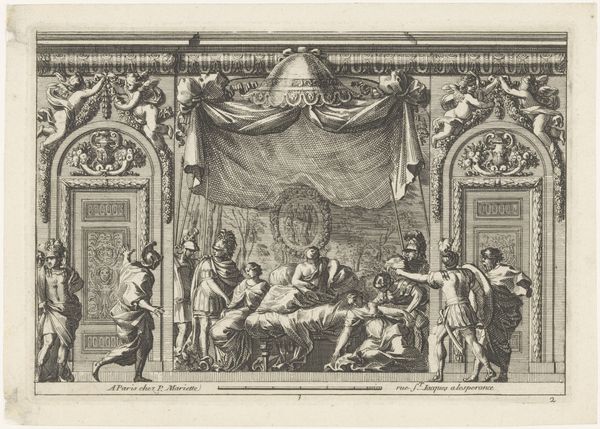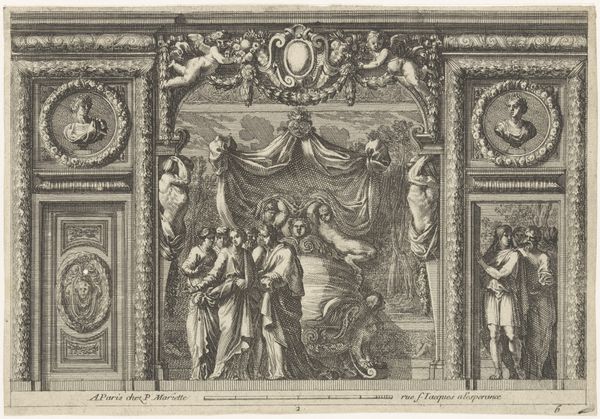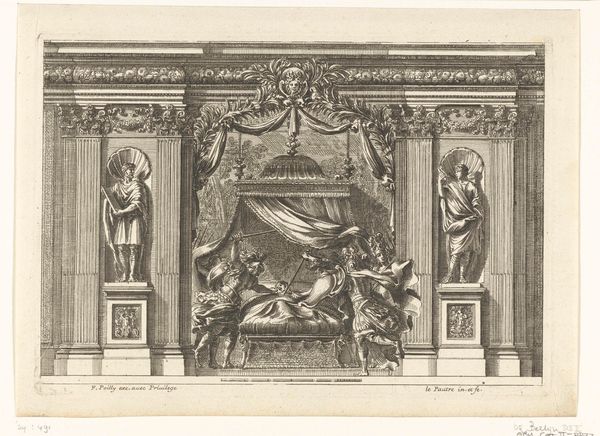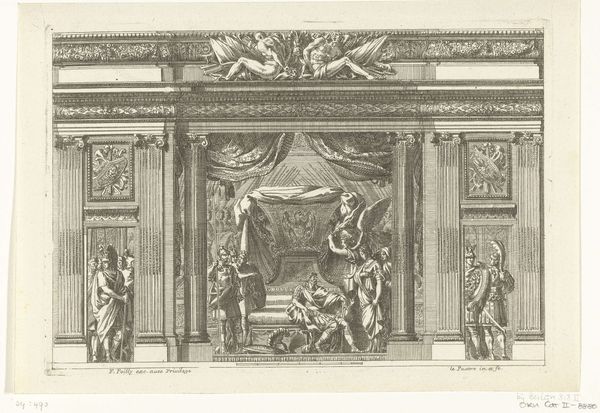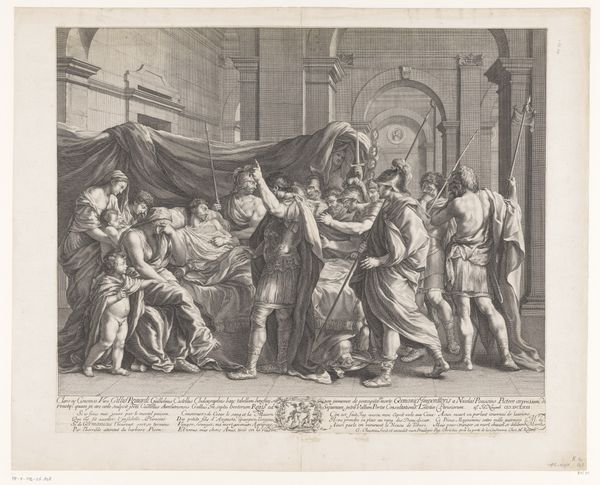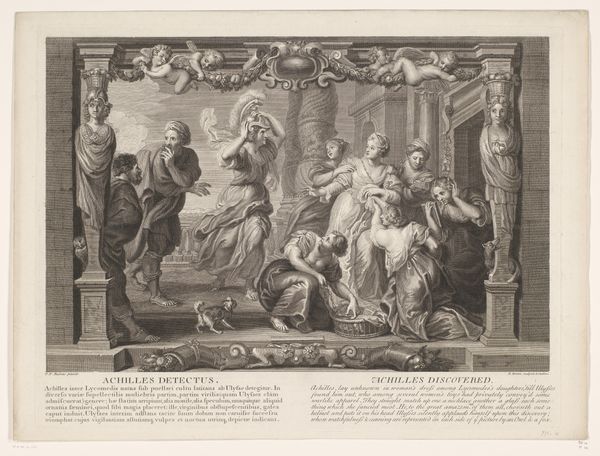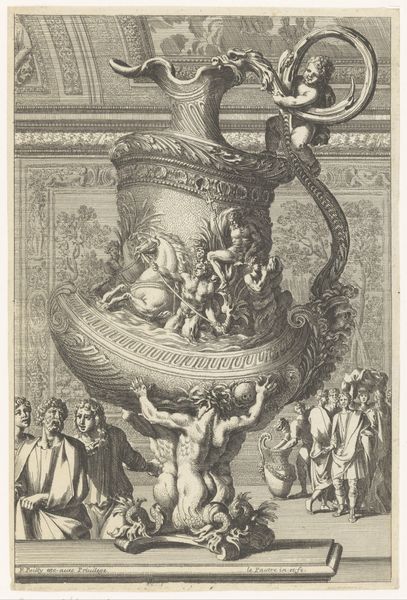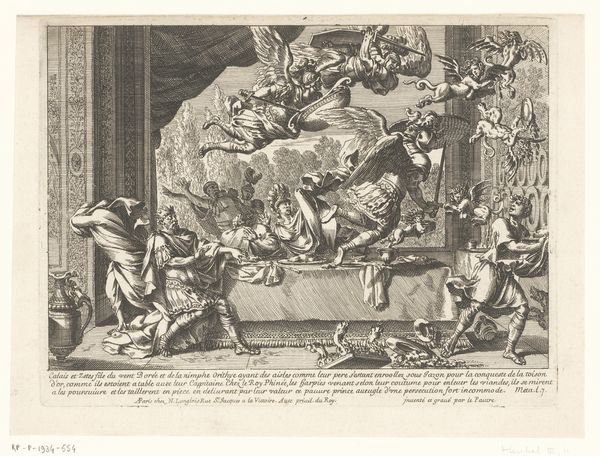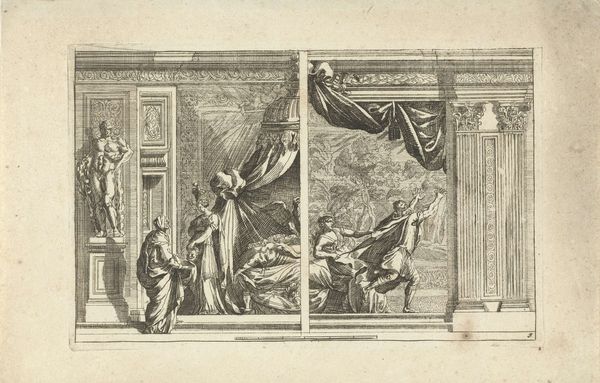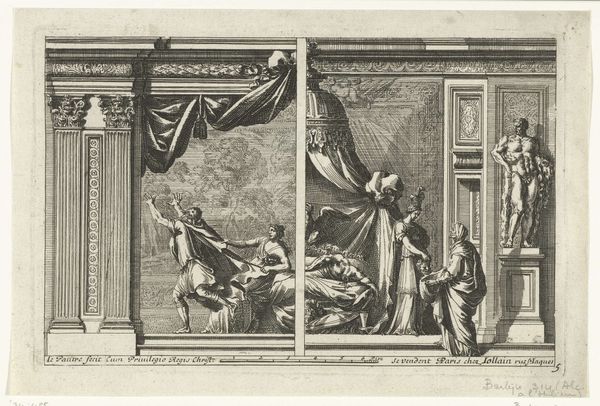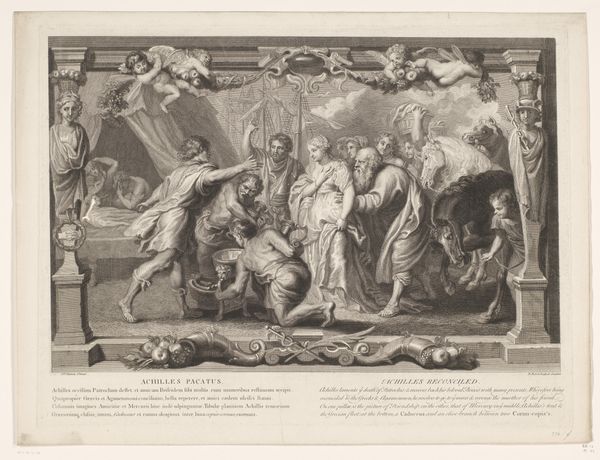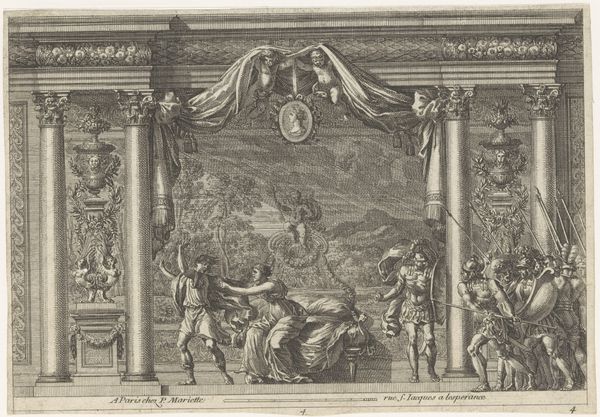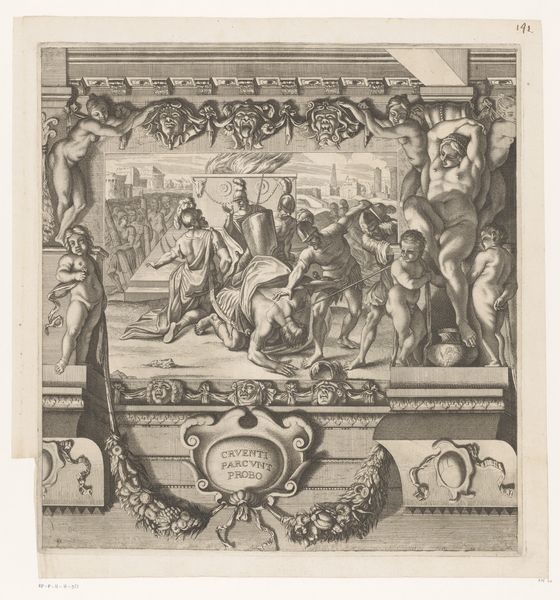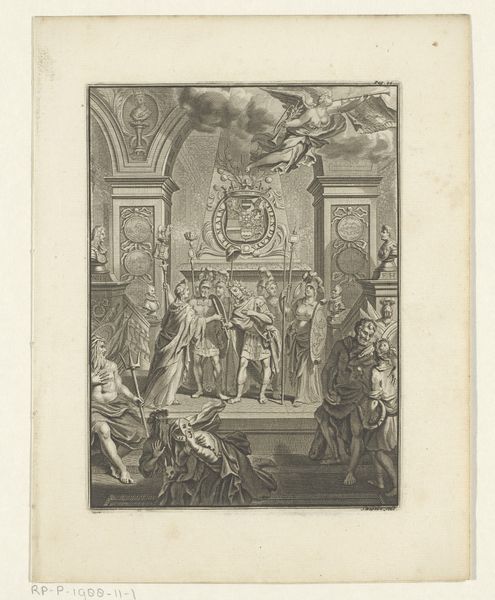
print, engraving
#
baroque
# print
#
figuration
#
line
#
history-painting
#
engraving
Dimensions: height 150 mm, width 214 mm
Copyright: Rijks Museum: Open Domain
Editor: This is "Alkoof met stervende Germanicus," a 17th- or early 18th-century engraving by Jean Lepautre, currently at the Rijksmuseum. It has such a theatrical, dramatic feel, doesn't it? How do you interpret this work? Curator: The drama you perceive reflects the baroque style, but let's dig deeper than aesthetics. This image speaks to power, succession, and vulnerability within patriarchal systems. Germanicus, on his deathbed, surrounded by male figures, embodies a crisis of leadership. Who benefits from his death, and how does this scene reinforce or challenge existing hierarchies? Editor: I see your point. The rigid order and symmetry almost feel oppressive. Curator: Precisely. Consider the symbolism of the architectural alcove, almost like a stage. The dying Germanicus is not just a man; he is a spectacle. What does it mean to make a spectacle of death, especially a death laden with political implications? Does the presence of so many male figures serve to console or control? Editor: So it is not just about remembering the dying man but more about the political machinations and social performances that happen because of it? Curator: Exactly. And let's consider the female figures— or the lack thereof! The engraving highlights the historical absence of women in narratives of power and succession. Their silence is deafening. This work allows us to question whose stories are told and whose are erased in the construction of history. Editor: That completely shifts my understanding of the artwork. I was only thinking of the scene itself and its tragic tone, instead of its societal context. Curator: It is about critically looking into not just art itself but the lens through which it affects identity, gender and race. This image becomes a lens through which we examine broader cultural narratives. Editor: Thanks! Now I understand how to explore it on my own.
Comments
No comments
Be the first to comment and join the conversation on the ultimate creative platform.
